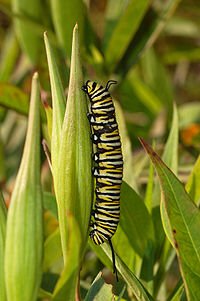
Photo from wikipedia
The rising applicability of graphene oxide (GO) should be preceded by detailed tests confirming its safety and lack of toxicity. Sensitivity to GO of immature, or with different survival strategy,… Click to show full abstract
The rising applicability of graphene oxide (GO) should be preceded by detailed tests confirming its safety and lack of toxicity. Sensitivity to GO of immature, or with different survival strategy, individuals has not been studied so far. Therefore, in the present research, we focused on the GO genotoxic effects, examining selected parameters of DNA damage (total DNA damage, double-strand breaks—DSB, 8-hydroxy-2′-deoxyguanosine-8-OHdG, abasic site—AP sites), DNA damage response parameters, and global methylation in the model organism Acheta domesticus. Special attention was paid to various life stages and lifespans, using wild (H), and selected for longevity (D) strains. DNA damage was significantly affected by stage and/or strain and GO exposure. Larvae and young imago were generally more sensitive than adults, revealing more severe DNA damage. Especially in the earlier life stages, the D strain reacted more intensely/inversely than the H strain. In contrast, DNA damage response parameters were not significantly related to stage and/or strain and GO exposure. Stage-dependent DNA damage, especially DSB and 8-OHdG, with the simultaneous lack or subtle activation of DNA damage response parameters, may result from the general life strategy of insects. Predominantly fast-living and fast-breeding organisms can minimize energy-demanding repair mechanisms.
Journal Title: International Journal of Molecular Sciences
Year Published: 2022
Link to full text (if available)
Share on Social Media: Sign Up to like & get
recommendations!